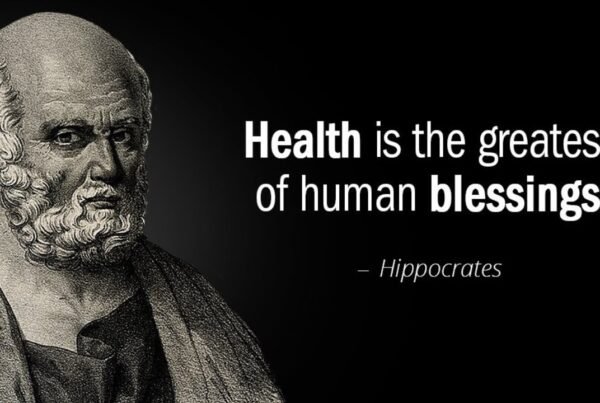The Greater Defence System (GDS), proposed by H-H. Reckeweg, consists of 6 sub-systems, all of which work together to maintain homeostasis in the body and to protect it from the influence of toxins both through their elimination and through repair of any damage caused. The GDS consists of:
- The reticuloendothelial system;
- The HPA (hypothalamus-pituitary-adrenal) axis;
- The neural reflex system;
- Detoxification by the liver;
- Detoxification of the matrix; and
- The mucus membranes (GALT, MALT, BALT etc.)
All of these systems work together through various feedback loops to maintain homeostasis and form what essentially makes up the greater immune system. If the system comes under great stress through either an excess of toxicity entering the body, a weakened vital force or any of the systems involved in the GDS under-functioning for any reason, its ability to self-regulate and maintain balance can become compromised. When this happens, the body can get stuck in a certain state, unable to shift itself back into balance. This state is known as regulation rigidity (Sharma, 2019).
Are you interested in a holistic approach to health and nutrition that incorporates naturopathy? Read about my programs here.
One of the most important cycles that comes under the jurisdiction of the GDS is that of inflammation. The main action of inflammation occurs only within the extra cellular matrix and is mostly regulated by the HPA axis, although the reticuloendothelial system, neural reflex system and the liver are naturally involved in certain parts of the process. Inflammation, while often thought of as being the enemy, has a vital role to play in detoxification and healing of the organism and takes place through two distinct stages (Sharma, 2019).
Initiation of the process of inflammation is triggered by the presence of acidic conditions in the matrix. These conditions could be caused by a variety of factors, such as: stress, dehydration, the presence of homotoxins in the matrix (through poor diet, incomplete digestion, exposure to environmental toxins or incomplete previous cycles of detoxification in the matrix), or even through the matrix’s own circadian rhythm that fluctuates between acidic and alkaline. In this environment, macrophages, Th1 and Th2 cells within the extra cellular matrix are triggered to release tissue necrosis factor alpha (TNFa), which is a pro-inflammatory cytokine (cytokines are messengers, similar to hormones, which play a role in regulation of the immune system as well as cellular communication). This is the trigger for the first stage of inflammation to begin (Sharma, 2019).
As always, the body is not working against us in any way, or punishing us for having an acidic terrain with inflammation. The purpose of inflammation is to detoxify the matrix and, according to the healthy circadian rhythm of the matrix, is a necessary part of the body’s maintenance. It is only when inflammation is not allowed or not able to complete its job, that health issues begin, through chronic inflammation or the immune system being stuck (regulation rigidity), which we will cover later in the essay. Whether through a build-up of toxins through diet, metabolic processes or emotional stress, the matrix needs to be cleared and detoxified and inflammation is the body’s way of performing this vital job (Sharma, 2019).
In this first stage of inflammation, proteogylans (PGs) and glycosaminoglycans (GAGs), polysaccharides within the extra cellular matrix, are broken down by the proteolytic and hydrolytic enzymes that are secreted by various parts of the extra cellular matrix (fibroblasts, macrophages and neutrophyls). As a result of the breakdown of the PGs and GAGs, toxins that were stuck within the extra cellular matrix are liberated and able to pass out into the lymph and later towards the liver for detoxification and conjugation before (hopefully) being eliminated from the body. The pressure in the extra cellular matrix is thought to be higher than that of the lymph, especially during the first stage of inflammation when sodium builds up in the matrix, increasing the pressure further through its attraction to water (Wood, 2021). This facilitates the removal of toxins within the matrix into the lymph, once broken down through the first stage of inflammation. This phase is known as the shock phase, during which the sympathetic nervous system is dominant (Sharma, 2019).
If the first stage of inflammation is successful and allowed to complete without the interference of anti-inflammatory medication, there is an increase in the regulatory Th3 cells, which inhibits the further release of Th1 and Th2 cells and triggers the release of the anti-inflammatory cytokine tissue growth factor beta (TGFb). The result of this is a decrease in the acidity of the matrix and the hypothalamus triggers the pituitary gland to release adenocorticotropic hormone (ACTH). This will trigger the adrenal cortex to release cortisol, the body’s most powerful anti-inflammatory, which also triggers the pituitary to stop the release of ACTH. This is then the moment when stage two of inflammation can begin, which is the stage where the matrix polymers are built back up again and tissues are repaired. This phase is known as the anti-shock phase, during which the parasympathetic nervous system is dominant (Sharma, 2019).
In response to a stressor or influx of toxins, several rounds of these phases may be necessary, in which the strength of the response each time should be gradually diminished. This is due to the nature of the self-regulatory system and is illustrated by the diagram below:
Figure 1 – Self-regulating cycles of inflammation
The above illustrates how the GDS should self-regulate the inflammatory process in a healthy person when all systems work as they should. However, if the GDS is diminished in strength or function for any reason, if the toxin or stressor is too great or the exposure is too prolonged, issues in this process can arise. This is well illustrated by the analogy of Hans Selye’s model of stress. Selye proposed that there were three stages that an organism passes through when exposed to prolonged stress (Sharma, 2019):
1. The alarm stage: at the initial exposure to stress, the adrenals first release adrenaline to trigger the body’s fight or flight response. However, the initial response of adrenaline is designed to be a short-term one – if this stress continues, only cortisol is released, as explained above to assist in the second stage of healing or anti-shock.
2. The next stage is the resistance stage: here, increased cortisol is released in order to help the body to deal with the continued stress.
3. Finally, the exhaustion stage is reached: here, the adrenals are exhausted and are no longer able to produce cortisol.
In a similar fashion, if the conditions that caused inflammation to occur in the first place (analogous to stress, and often caused by stress itself), continue to be present, the body’s selfregulation system can become exhausted and fail to function properly. This results in the stage of regulation rigidity referred to earlier. The body can get stuck on either side of its healing response: the inflammatory, sympathetic shock phase, or the anti-inflammatory, parasympathetic anti-shock phase (Sharma, 2019). This is illustrated in the diagram below:
Figure 2 – Th1 & Th2 regulation rigidity
If stuck in the shock phase, known as Th1 dominant rigidity, the body is stuck in a state of chronic inflammation and this may manifest in conditions such as inflammatory bowel disease, rheumatoid arthritis or multiple sclerosis (Sharma, 2019).
If stuck in the anti-shock phase, known as Th2 dominant rigidity, this results in what is known as the allergic picture, where various allergic conditions may develop due to the high levels of toxicity present within the matrix and tissues of the body that the GDS has given up trying to eliminate. As a result of this state, the person may not experience colds or fevers for many years (themselves being signs of an inflammatory detoxification attempt from the body). These are the types of people who may get the first cold or sickness in many years after a change in diet through naturopathic nutritional therapy, as the body is knocked out of regulation rigidity and into a renewed inflammatory response. (Sharma, 2019).
To summarise, this exhaustion state of rigidity of the immune regulatory system is quite common and behind many conditions that clients experience. People are more likely to be prone to entering this situation if there a state of latent acidosis within the body, which may be caused by excessive exposure to toxicity, stress, dehydration, acidic diet, poor digestion (leading to incomplete digestion of foods) and/or poor function of various parts of the GDS, be that through inheritance or damage from this lifetime.
Are you interested in a holistic approach to health and nutrition that incorporates naturopathy? Read about my programs here.
References
Sharma, Mary, 2019, Naturopathy Course Notes, Module 6: Homotoxicology, page 57, pages 69-77, School of Health, Stroud, UK
Wood, Matthew, 2021, Holistic Medicine and the Extra Cellular Matrix, page 20, Healing Arts Press, Vermont, USAroud, UK


